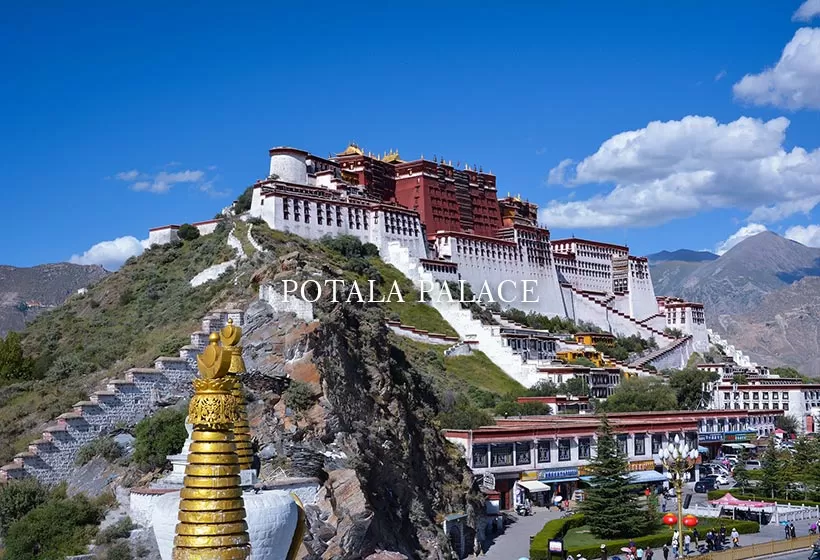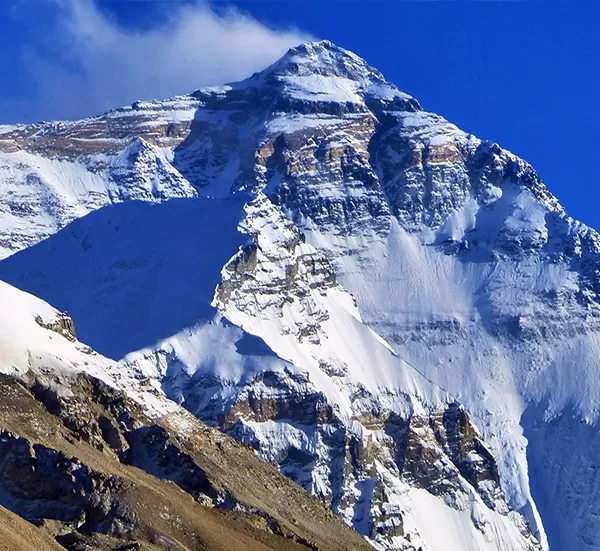Top 12 Famous Tourist Attractions Must-Visit in Tibet
Top attractions in Tibet
Tibet, a divine realm that leads to the heavens. Every inch of the land has reached the pinnacle of majesty, where gods coexist and myriad sources converge. The numerous sacred mountains and lakes, glaciers and valleys are renowned for their unparalleled beauty worldwide and the pristine and pure landscapes are incredibly captivating. Here are the top 12 must-visit attractions in Tibet
Top 1: Potala Palace
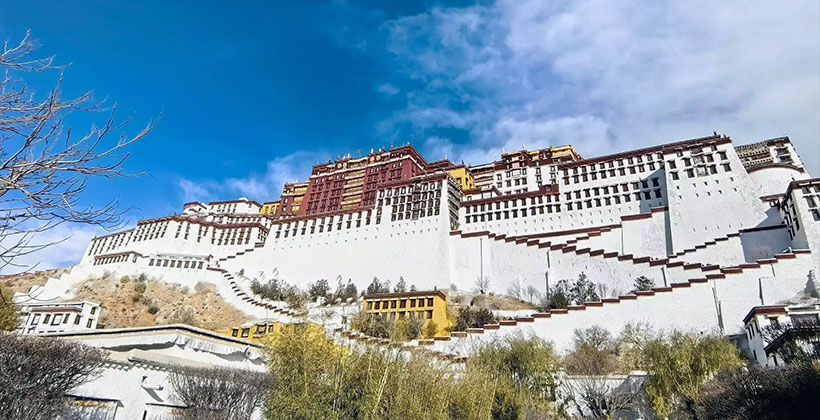 Potala Palace, Lhasa
Potala Palace, LhasaThe Potala Palace, located on the top of Marpo Ri, the Red Hill, in the northwest of Lhasa, the capital of Tibet Autonomous Region, is the world's highest palace that integrates a palace, fortress, and monastery. It is the largest and most complete ancient palace-fortress complex in Tibet. The palace is initially built by the Tubo King Songtsen Gampo to welcome his brides, Princess Bhrikuti of Nepal and Princess Wencheng of the Tang Dynasty. The main structure is divided into the White Palace and the Red Palace, which stands over 200 meters high, with an exterior of 13 stories and an interior of 9 stories. In front of the Potala Palace is the Potala Palace Square, the highest city square in the world.
The interior of the Potala Palace is adorned with numerous murals, creating an extensive gallery of painting art. Nearly 200 artists participated in the mural creation over a span of more than ten years. The various halls house a vast collection of precious cultural relics and Buddhist artifacts, making the palace a treasure trove of Tibetan and Han cultural integration.
More about the Potala Palace >>
- Address: on Marpo Ri in the northwest of Lhasa, Tibet
- Open Hours: 9:40 AM – 3:20 PM
- Tour Length: 2-4 hours
Top 2: Mount Everest
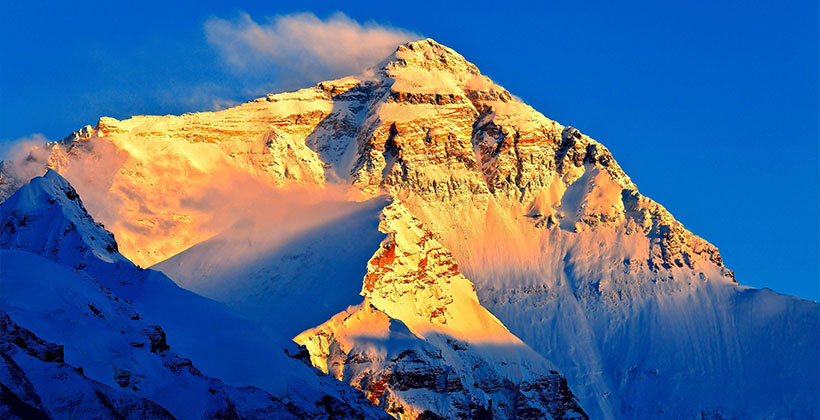 Mount Everest
Mount EverestMount Everest (Qomolangma), the main peak of the Himalayas, is the highest mountain in the world, straddling the border between China and Nepal, with its summit located within China. As the world's highest peak, it is the centerpiece of the Everest Nature Reserve, which spans four counties in China, and the Sagarmatha National Park in Nepal.
Mount Everest boasts unique natural landscapes, including rivers, lakes, glaciers, and periglacial, along with its complex modern surface morphology. The mountain also features numerous geological relics, making it of significant scientific and aesthetic value.
At an altitude of 4,900 meters, Rongbuk Monastery is the highest monastery in the world, offering the best vantage point for viewing Mount Everest. This location marks the end of the journey for most ordinary tourists and is the last outpost of civilization before reaching Everest Base Camp.
- Address: the border between China and Nepal of Tingri County, Shigatse City, Tibet
- Open Hours: 0:00 AM – 12:00 PM
- Tour Length: 1-3 days
Top 3: Tashilhunpo Monastery
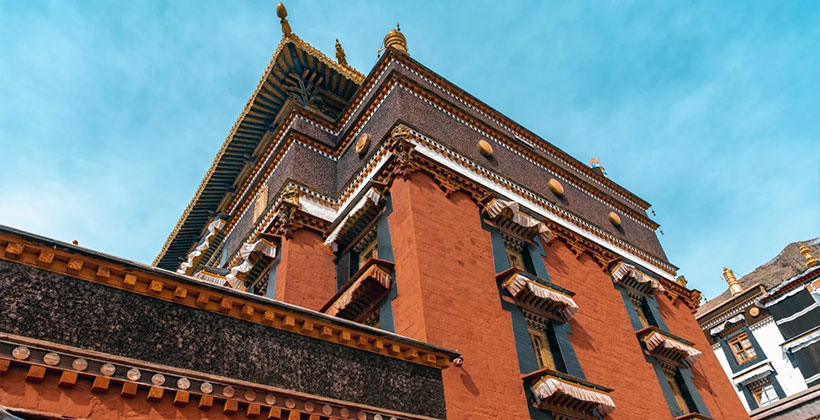 Tashilhunpo Monastery
Tashilhunpo MonasteryTashilhunpo Monastery, meaning "Auspicious Sumeru Monastery", is located at the foot of the Drolmari Mountain in Shigatse, Tibet. It is the largest monastery in the region and rivals the Potala Palace. Covering an area of 150,000 square meters, the monastery includes 57 monk residences and a total of 3,600 rooms.
The architecture of Tashilhunpo Monastery blends traditional Tibetan architectural features with Buddhist elements, showcasing Tibetan craftsmanship and architectural characteristics, which has profoundly influenced other Tibetan Buddhist structures. It effectively embodies the solemnity and grandeur of Tibetan Buddhism's artistic and religious significance, especially in the depiction of the Panchen Lama's pagoda. Together with Ganden Monastery, Sera Monastery, and Drepung Monastery in Lhasa, it is one of the four great Gelug monasteries of Tibetan Buddhism.
- Address: at Drolmari Mountain, south of Shigatse City, Tibet
- Open Hours: 10:00 AM – 01:00 PM & 03:30 PM – 06:30 PM
- Tour Length: 2-3 hours
Top 4: Namtso Lake
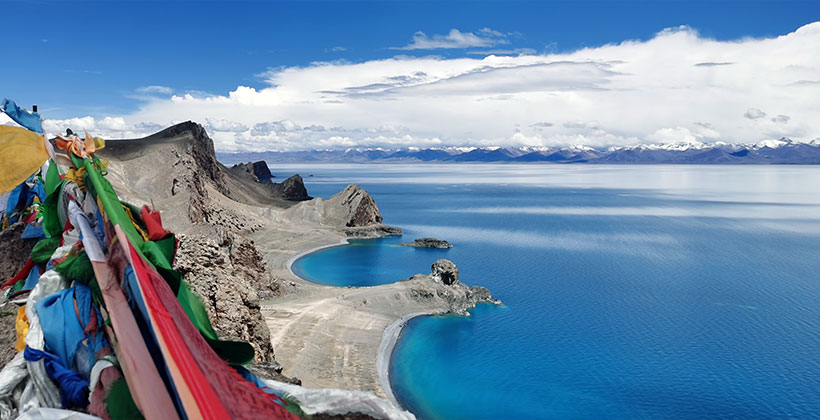 Namtso Lake
Namtso LakeNamtso Lake, located in central Tibet, is the second-largest lake in Tibet and the third-largest saltwater lake in China. The lake's altitude is 4,718 meters, and it is nearly rectangular, stretching over 70 kilometers from east to west and more than 30 kilometers from north to south, covering an area of about 1,920 square kilometers. With a water volume of 76.8 billion cubic meters, it is the highest large lake in the world by elevation.
Namtso Lake is one of Tibet's "Three Sacred Lakes", which refers to Namtso Lake, Lake Manasarovar, and Yanmdrok lake, used for predicting fortune and misfortune. It is said that those with great destiny can see supernatural phenomena from the hills around the lake. Historically, this area has been a site for Tibetan Buddhist practices, such as "mirror divination". Every summer, many lamas come to the lake for pilgrimage, interpreting the mystical sights within the lake to predict the future.
- Address: No. 109 National Highway, Damxung County, Lhasa City, Tibet
- Open Hours: 06:00 AM – 06:00 PM
- Tour Length: 2-3 hours
Top 5: Jokhang Temple
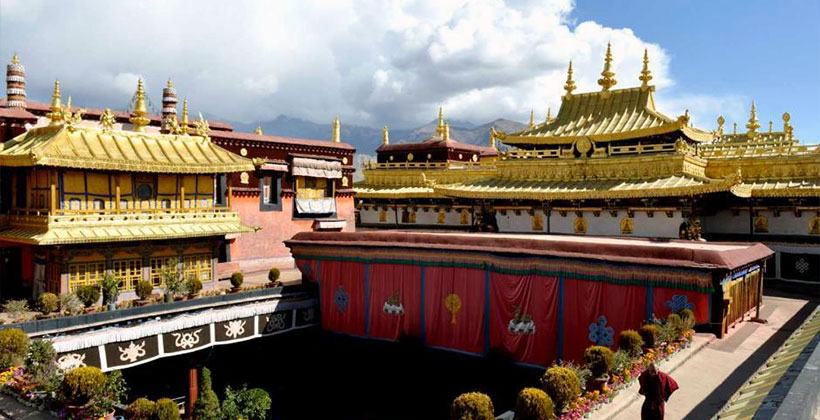 Jokhang Temple
Jokhang TempleJokhang Temple, known in Tibetan as "The House of the Buddha", is situated in the heart of Lhasa's old town. It is a Tibetan Buddhist temple built by King Songtsen Gampo. Originally named "Rasa", the temple's name eventually became the city's name, evolving into the modern "Lhasa".
Jokhang Temple boasts a history of over 1,300 years and holds an unrivaled position in Tibetan Buddhism. It is the most splendid surviving structure from the Tubo period and the earliest timber-and-earth structure in Tibet, pioneering the Tibetan flat-roofed temple style. The circumambulation route around the central hall, which houses the Shakyamuni Buddha statue, is called "Nangkhor". The path around the outer walls of Jokhang Temple is known as "Barkhor". and the streets radiating from this circuit form Barkhor Street. The largest circuit, "Lingkhor", includes Jokhang Temple, Potala Palace, Chakpori Hill, and Ramoche Temple.
- Address: No. 2 Barkhor West Street, Chengguan District, Lhasa City, Tibet
- Open Hours: 08:30 AM – 06:00 PM
- Tour Length: 2-3 hours
Top 6: Barkhor Street
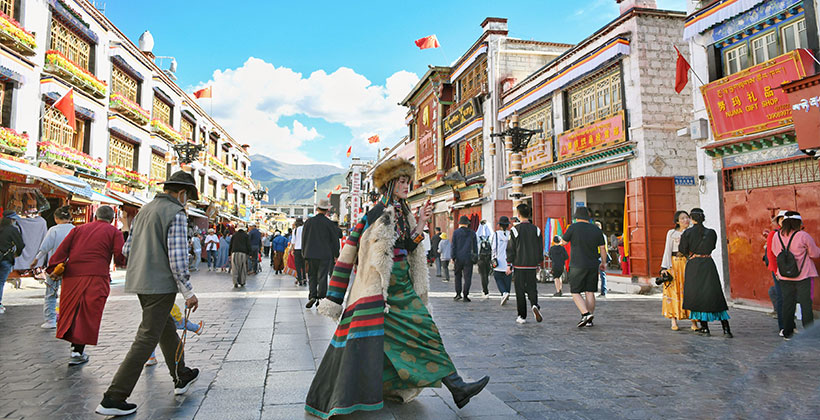 Barkhor Street
Barkhor StreetIn Tibetan, "Barkhor" means "Mid-circumanbulation". Barkhor Street, also known as Bajiao Street, is located in Chengguan District, Lhasa City. It is the bustling pilgrimage and commercial street built around Jokhang Temple. Barkhor Street has largely preserved the traditional appearance and living style of the old city. Originally, the street was a simple circumanbulation surrounding Jokhang Temple, known by Tibetans as the "Holy Path". Throughout Barkhor Street, you can see devout worshippers, and the religious faith imbues the street with a unique atmosphere.
For thousands of years, Barkhor Street has integrated religion, culture, tourism, and commerce, making it one of the most distinctive and charming historical and cultural districts in China and worldwide. It stands as a historical microcosm of Tibet's development from ancient times to the present.
- Address: Chengguan District, Lhasa City, Tibet
- Open Hours: 00:00 AM – 12:00 PM
- Tour Length: 2-3 hours
Top 7: Norbulingka
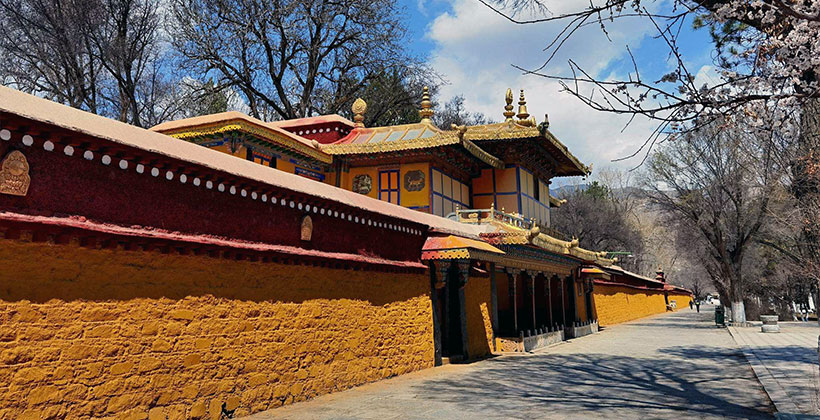 Norbulingka
NorbulingkaNorbulingka, located in the western suburbs of Lhasa, Tibet, was built in the 1740s during the reign of the Seventh Dalai Lama. It served as the summer residence and administrative center for successive Dalai Lamas and is a quintessential example of Tibetan-style gardens. Over more than two centuries of expansion, the garden now covers an area of 360,000 square meters and hosts over 100 species of plants. These include not only common flora from the Lhasa region but also exotic flowers and plants from the northern and southern slopes of the Himalayas, as well as rare flowers transplanted from inland China or introduced from abroad. Norbulingka is the largest, most scenic, and most historically significant man-made garden in Tibet, making it a veritable highland botanical garden.
- Address: No. 1 South Minzu Road, Chengguan District, Lhasa City, Tibet
- Open Hours: 09:30 AM – 06:00 PM
- Tour Length: 2-4 hours
Top 8: Sera Monastery
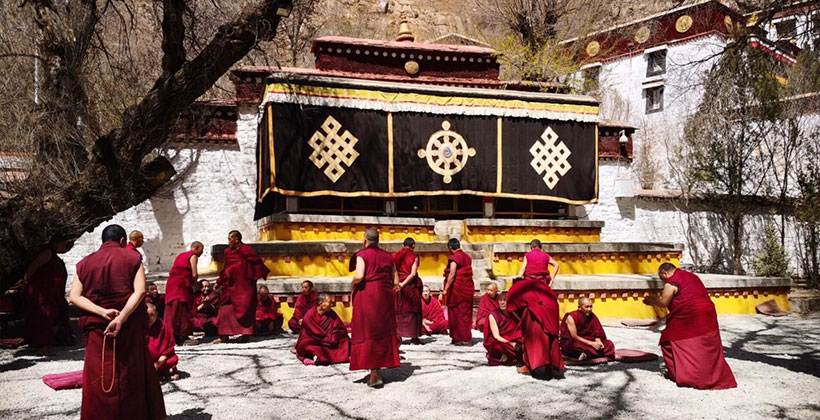 Sera Monastery
Sera MonasterySera Monastery, officially known as "Sera Mahayana Monastery", is one of the six main monasteries of the Gelugpa school of Tibetan Buddhism. It is the last to be built among the three great monasteries in Lhasa and is a nationally protected cultural heritage site. Sera Monastery is located at the foot of Sera Utse Mountain, about 3 kilometers north of Lhasa, surrounded by willow trees. It has historically been a place where eminent monks and lamas teach and expound Buddhist doctrines, with numerous small nunneries and monasteries around it.
The monastery houses thousands of vajra Buddha statues, and the walls of the main hall are adorned with various depictions of Buddha and Buddhist stories, including figures of Shakyamuni, Medicine Buddha and Amitabha. Sera Monastery is renowned for its "monk debates", a unique form of philosophical discussion and debate practiced by monks, which attracts many visitors and pilgrims.
- Address: No. 1 Sera Road, Chengguan District, Lhasa City, Tibet
- Open Hours: 08:30 AM – 05:00 PM
- Tour Length: 3-4 hours
Top 9: Yanmdrok Lake
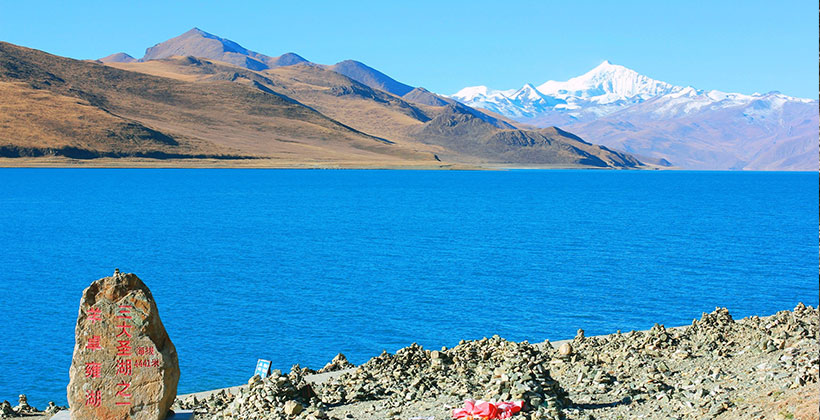 Yanmdrok Lake
Yanmdrok LakeYamdrok Lake means "Jade Lake" in Tibetan. Due to its resemblance to coral branches, it is also called "Coral Lake Above" in Tibetan. Located in Nagarzê County, Shannan City, about 70 kilometers southwest of Lhasa, it is the largest inland lake north of the Himalayas. The breathtaking lake and mountain scenery make it the most beautiful in southern Tibet. Yamdrok Lake covers an area of 675 square kilometers, with a surface elevation of 4,441 meters. The lake's tranquil, emerald-blue surface glistens like a sapphire on the southern Tibetan plateau.
- Address: No. 307 Provincial Highway, Nagarzê County, Shannan City, Tibet
- Open Hours: 00:00 AM – 12:00 PM
- Tour Length: 1-3 hours
Top 10: Samye Monastery
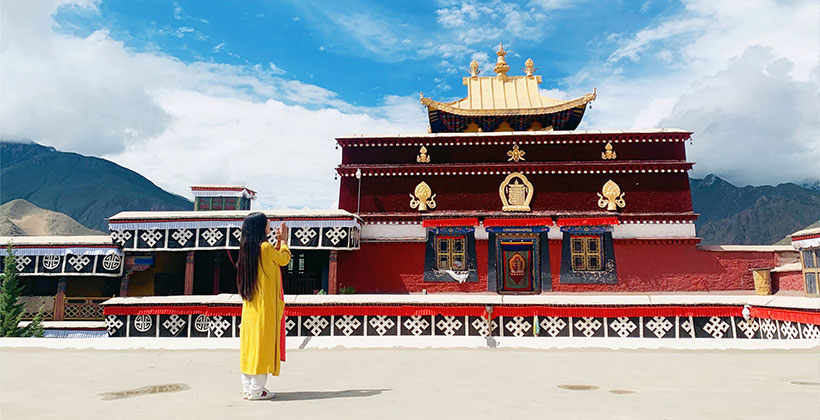 Samye Monastery
Samye MonasterySamye Monastery is located in Sangye Town, Zhanang County, in the Shannan City of the Tibet Autonomous Region. It sits on the north bank of the Yarlung Zangbo River, at the foot of Hapori mountain. Built during the 8th century in the Tubo Kingdom era, it was the first monastery in Tibet to house monks who had received full ordination. The layout of the monastery follows the Buddhist cosmological model, with the central temple combining architectural styles from Tibetan, Han Chinese, and Indian traditions. This unique blend of styles has earned Samye Monastery the nickname "Three-style Temple".
- Address: Samye Town, Zhanang County, Shannan City, Tibet
- Open Hours: 09:00 AM – 04:00 PM
- Tour Length: 2-3 hours
Top 11: Mount Kailash and Lake Manasarovar
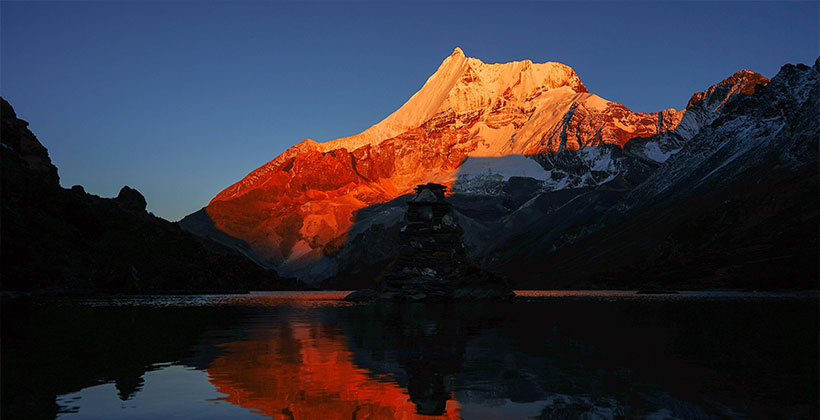 Mount Kailash
Mount KailashMount Kailash, located in the northern part of Purang County, Ngari Prefecture, is the main peak of the Gangdisê Mountains and the highest peak in the western section of the Gangdisê range. It is one of the four sacred mountains in Tibetan Buddhism and is regarded as the "center of the world" by multiple religions. Despite not being the highest peak in the region, Mount Kailash stands out due to its perpetually snow-capped summit, which, when illuminated by sunlight, appears distinct and reverent compared to the surrounding peaks.
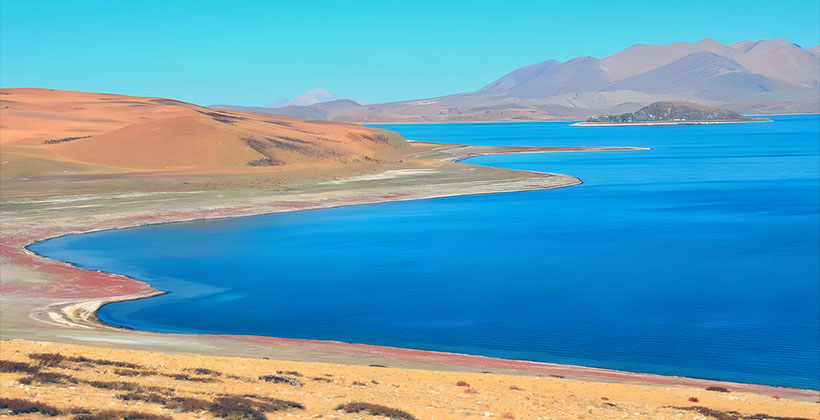 Lake Manasarovar
Lake ManasarovarLake Manasarovar, situated to the south of Mount Kailash, is known as the "Invincible Jade Lake”. It is the second-largest natural freshwater lake by volume in China and has the highest transparency among freshwater lakes. Lake Manasarovar is one of the three sacred lakes in Tibet and the source of four major rivers in Asia. The lake not only boasts beautiful scenery but is also home to numerous rare plants and animals. Its clear waters nurture various fish and water birds, while the surrounding grasslands are inhabited by Tibetan antelope and wild donkeys.
- Address: northern of Purang County, Ngari Prefecture, Tibet
- Open Hours: 08:30 AM – 10:00 PM
- Tour Length: 2-3 days
Top 12: Guge Kingdom Site
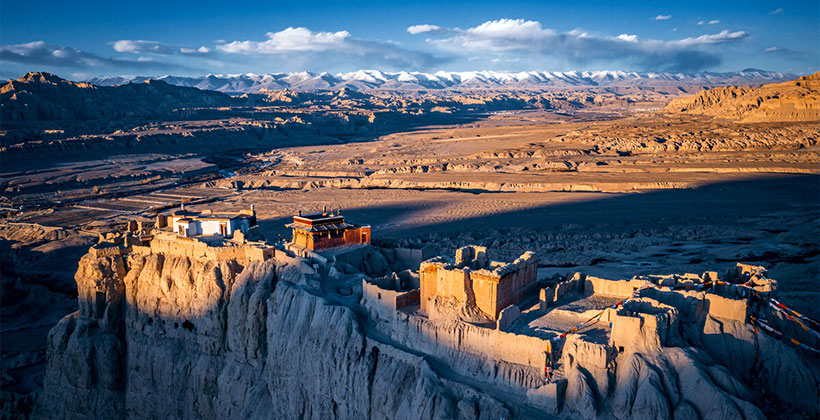 Guge Kingdom Site
Guge Kingdom SiteThe Guge Kingdom Site, located in Tsaparang Village, Zanda County, in the Ngari Prefecture, sits on a hill by the Langchen Tsangpo River. Covering an area of about 18,000 square kilometers, the site comprises over 300 houses and caves. The Guge Kingdom, with its 700-year history of brilliant civilization, remains an enigma regarding its disappearance.
The interiors of the buildings at the Guge Kingdom Site feature vibrant murals on ceilings and walls, showcasing a unique style with significant artistic and historical value, which occupy an important position in Tibetan art history. The site also contains several structures that exhibit complete works of painting, clay sculpture, and carving from the Guge Kingdom period, representing the architectural and artistic achievements of this lost civilization.
- Address: Thoding town, Zanda County, Ngari Prefecture, Tibet
- Open Hours: 08:00 AM – 08:30 PM
- Tour Length: 1-3 hours
Customize Your Unique Tibet Tour

Alternatively, if you would like to customize your Tibet tour, please visit our Tibet Tour Customized Center. We assure you that you will receive a reply within 24 working hours.
Informative Articles for Your Tibet Trip
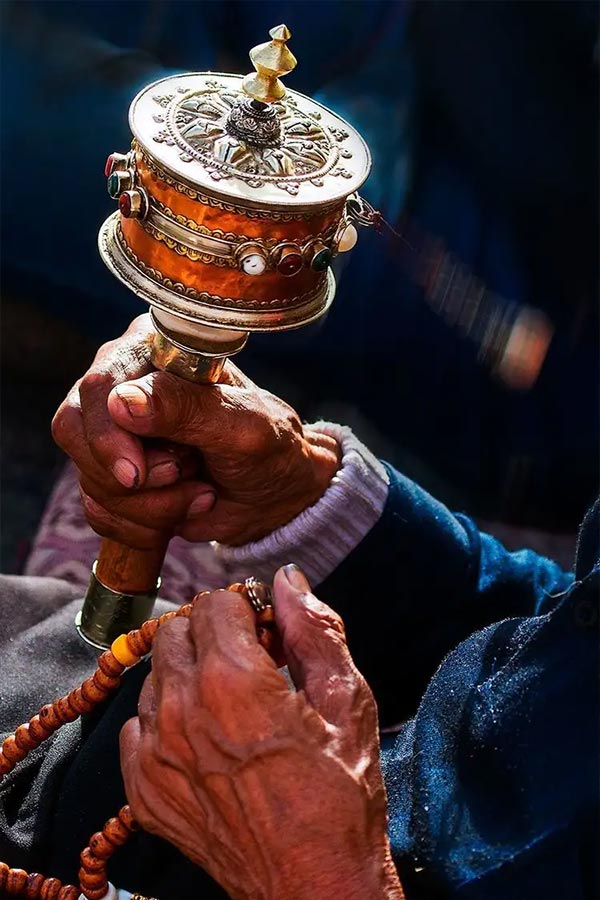 Prayer wheel, Tibet
Prayer wheel, Tibet- Tibet Travel Guide: attractions, weather, food, culture, tours, etc.
- Tibetan Culture: rich and unique
- Travel itinerary: various itineraries for your reference
- Weather: the best time and seasons to visit Tibet
- Attraction: well-selected top attractions
- Activities: Tibetan cultural immersions
- Where to Visit: top places to visit in Tibet
- Unique Perspective: top things to do in Tibet
- Food and Restaurants: what and where to eat while traveling in Tibet
- Accommodation: handpicked hotels for you
- Tibet Tours: tailor-made Tours for your reference
GREAT FAMILY CHINA TOUR
JULY 2024 We wanted to thank Grace at China Culture tour for organizing a great tour of China. We enjoyed our Beijing - Xian-Chengdu -Guilin -Yangshuo - Shanghai trip. Our local guides Bruce in Beijing, Susan in Xian, Jane in Chengdu, Mike in Guilin and Mary in Shanghai took care of us…read more details »
Teng Han L from SINGAPORE
Ready to Create a Unique Dream Travel?
